
Fundamentals
The expression ‘Fulani Braids’ designates a distinct style of hair artistry, deeply rooted in the traditions of the Fulani people, a prominent nomadic ethnic group residing across West Africa and the Sahel region. This particular braiding method, often recognized by its signature patterns that typically include cornrows positioned at the front of the head, frequently adorned with beads, cowrie shells, or other precious ornaments, transcends a mere aesthetic choice. It represents a profound cultural statement, a visual language conveying aspects of identity, lineage, and social standing within the Fulani community. The designation ‘Fulani Braids’ offers a clear delineation, a straightforward statement of its origin and characteristic appearance, allowing those new to the topic to grasp its foundational meaning.
Historically, these styles were not simply about outward beauty; they served as communicative devices. The precise arrangement of braids, the types of embellishments chosen, and even the direction of the plaits could signal a woman’s marital status, age, or familial connections. This practice underscores the deep cultural significance embedded within hair practices across many African societies, where coiffure often acted as a powerful form of nonverbal communication.
Fulani Braids represent a visual lexicon of identity and heritage, originating from the nomadic Fulani people of West Africa.

Origin and Initial Delineation
The historical genesis of Fulani Braids resides with the Fula people, whose ancestral practices shaped these distinctive patterns over centuries. This traditional African hairstyle, which has remained a staple among Fulani women, has recently garnered global recognition as a fashion trend. However, its enduring importance lies in its deep connection to the cultural identity and ancestral heritage of the Fulani tribe.
The initial explication of Fulani Braids often points to their characteristic design ❉ several long braids, typically five, that either hang or loop on the sides, frequently accompanied by a central coiffure braided into the middle of the head. These patterns are more than just aesthetically pleasing; they are a designation of belonging and a marker of a rich, living history.
In their earliest forms, these braids were often decorated with locally sourced accessories. Over time, these adornments have expanded to include golden accents, diverse beads, jingles, and chains, further enhancing their customisation and visual appeal. This evolution, while incorporating modern elements, does not diminish the original significance; instead, it showcases the adaptability of ancestral practices within contemporary contexts.
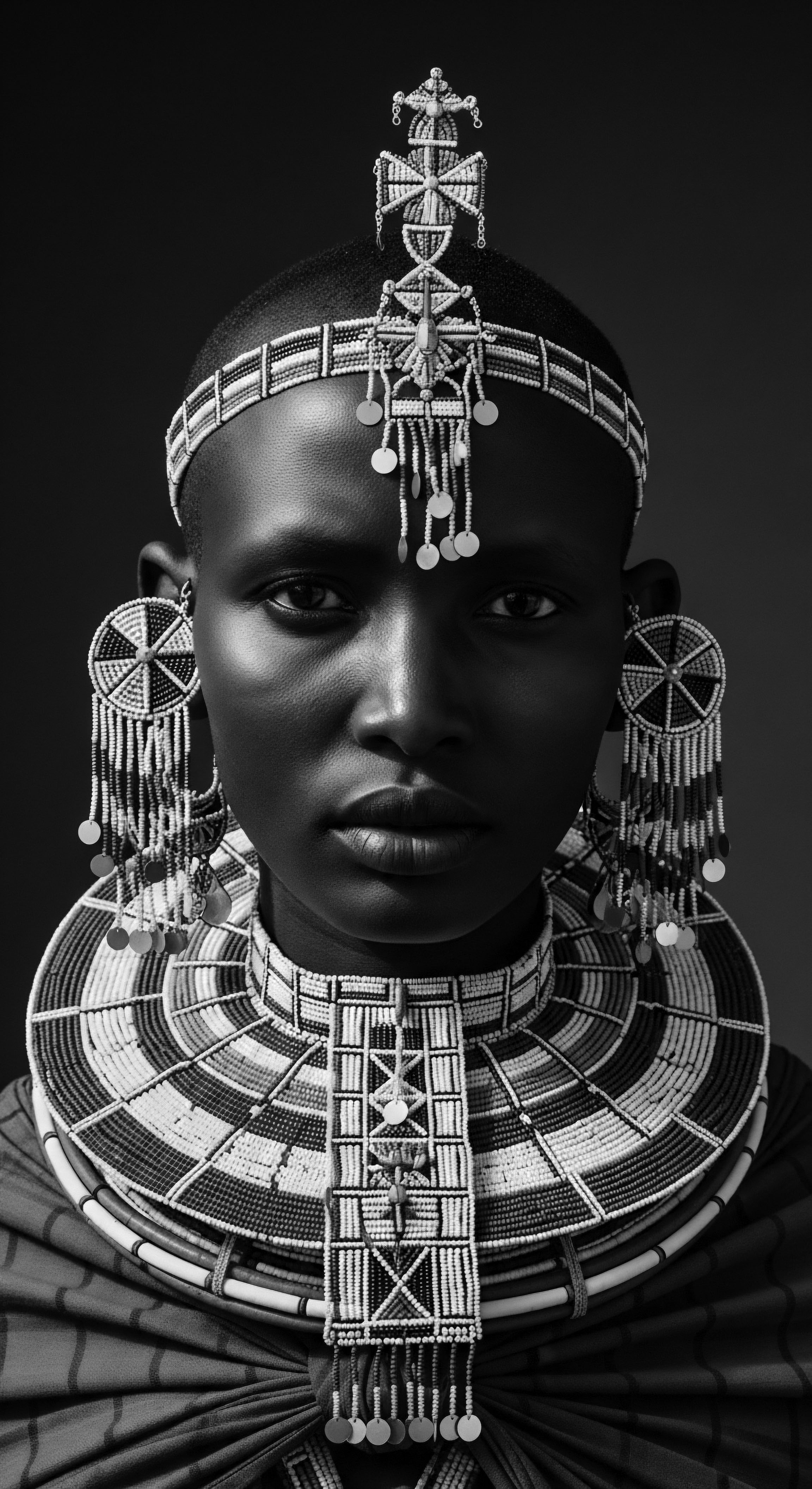
Fundamental Components of the Style
A primary characteristic of Fulani Braids is the integration of cornrows that lie flat against the scalp, often forming geometric designs or flowing lines. These cornrows can be small and numerous, or larger and more spaced, depending on the desired effect and the specific regional variation. The inclusion of loose, hanging braids, typically positioned around the face or extending down the back, sets this style apart from other forms of cornrowing. This combination creates a visually striking balance between secured and free-flowing elements.
The materials used in traditional Fulani Braids were often natural, reflecting the resources available within their environment. As understanding of the style expanded globally, the methods and materials diversified.
- Cornrow Base ❉ The foundation of Fulani Braids often involves cornrows braided directly backward from the hairline, sometimes curving to meet a central plait.
- Side Braids ❉ Several individual braids, typically two or more on each side, hang freely alongside the face, distinguishing the style.
- Central Plait ❉ A single, often prominent braid runs down the center of the scalp from front to back, serving as a defining element.
- Adornments ❉ Beads, cowrie shells, and silver coins were, and continue to be, common embellishments, symbolizing wealth, status, and cultural pride.
This fundamental delineation provides a starting point for appreciating the deeper cultural and historical connotations of Fulani Braids, setting the stage for a more detailed exploration of their meaning and significance.
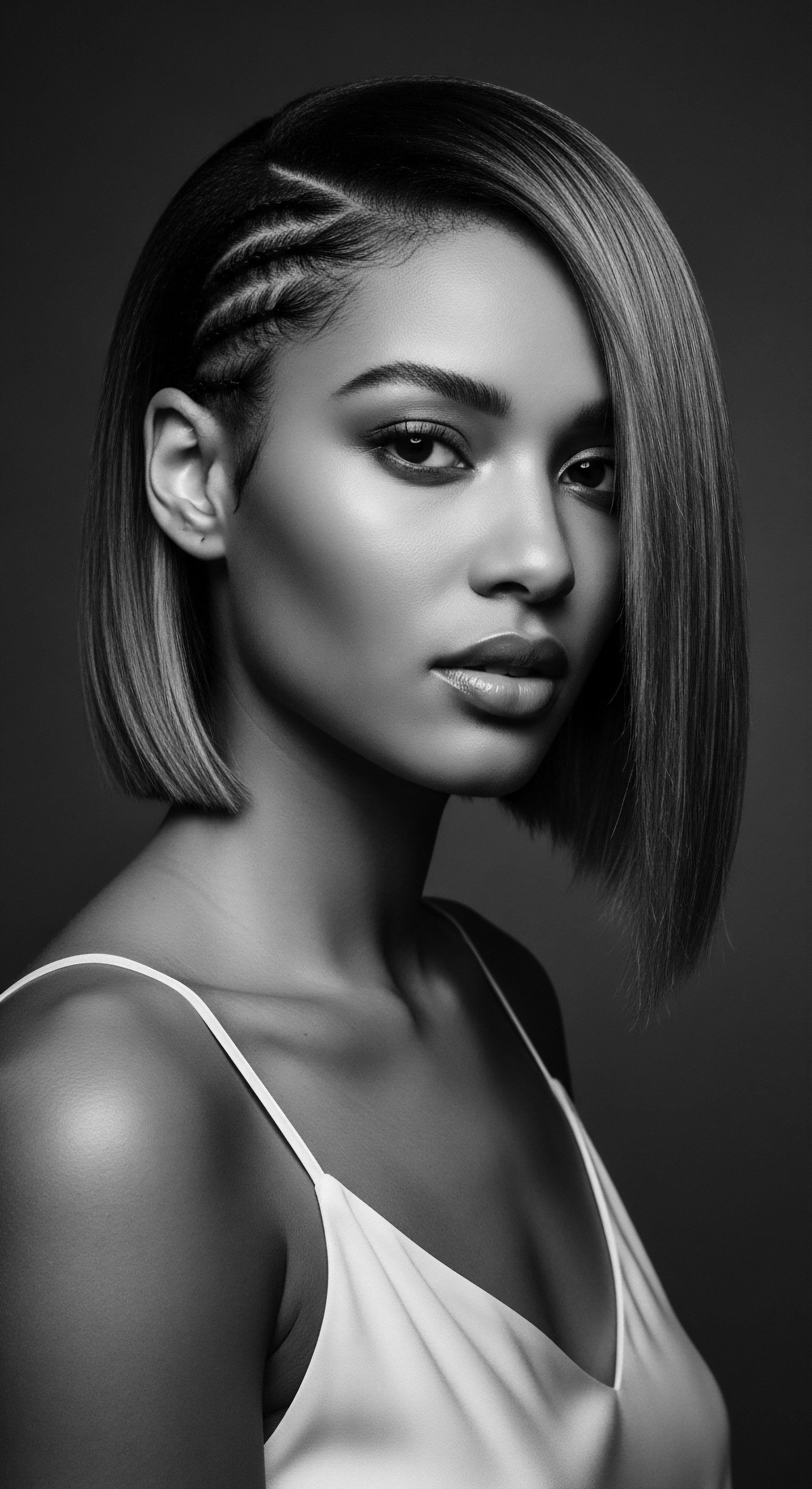
Intermediate
Moving beyond a basic understanding, the intermediate interpretation of Fulani Braids invites a contemplation of their deeper historical and sociological significance within the broader spectrum of textured hair heritage. This style is not merely a method of arranging hair; it embodies a living archive of ancestral wisdom, resilience, and communal connection. Its designation extends to its role as a protective style, safeguarding natural hair from environmental elements and manipulation, a practical application rooted in centuries of care practices for Black and mixed-race hair. The meaning of Fulani Braids, when viewed through this lens, becomes an elucidation of continuity, linking past traditions with present expressions of identity.

Echoes from the Source ❉ Ancestral Practices and Meaning
The origin of braiding techniques in Africa dates back thousands of years, with archaeological evidence suggesting their presence as far back as 3500 BCE. Within this vast historical context, the Fulani people developed their distinct braiding patterns, which held profound cultural and spiritual meanings. These hairstyles were integral to expressing identity and social affiliation, serving as visual cues for age, marital status, social rank, and even spiritual beliefs.
The Fulani women, often semi-nomadic, used these hairstyles to publicly display their wealth, familial connections, and marital status. This practice of using hair as a social register was widespread across pre-colonial African societies, where hair was considered sacred and a conduit for spiritual energy, connecting individuals to their ancestors and deities.
The creation of these intricate hairstyles was a communal activity, a social ritual that often spanned hours or even days. These sessions were not simply about styling; they were opportunities for bonding, sharing stories, gossip, and passing down cultural knowledge across generations. The rhythmic engagement of hands, the quiet conversations, and the shared space fostered strong female bonds and preserved traditional techniques. This collective aspect adds a profound layer to the meaning of Fulani Braids, signifying community, shared experience, and the continuity of heritage.
Fulani Braids embody a living lineage, transforming hair into a canvas for ancestral narratives and communal bonds.
The adornments incorporated into Fulani Braids also carry significant meaning. Cowrie shells, for example, historically served as a form of currency in many parts of Africa, thus symbolizing wealth and prosperity when used in hair. Silver coins and amber, particularly among young Fulani girls, were attached to their braids as heritage symbols, passed down through families. These elements transformed the hairstyle into a dynamic, wearable declaration of a person’s life journey and standing within their community.
The very act of hair styling, especially within the Fulani tradition, was a deliberate and meticulous process. It involved careful washing, combing, oiling, and the precise plaiting or twisting of hair, followed by decoration with various materials. This ritualistic approach speaks to a deep reverence for hair, viewing it not merely as a biological attribute but as a vital, sacred extension of the self. The designation of Fulani Braids as a cultural practice, therefore, acknowledges this holistic understanding of hair as a repository of personal and collective history.
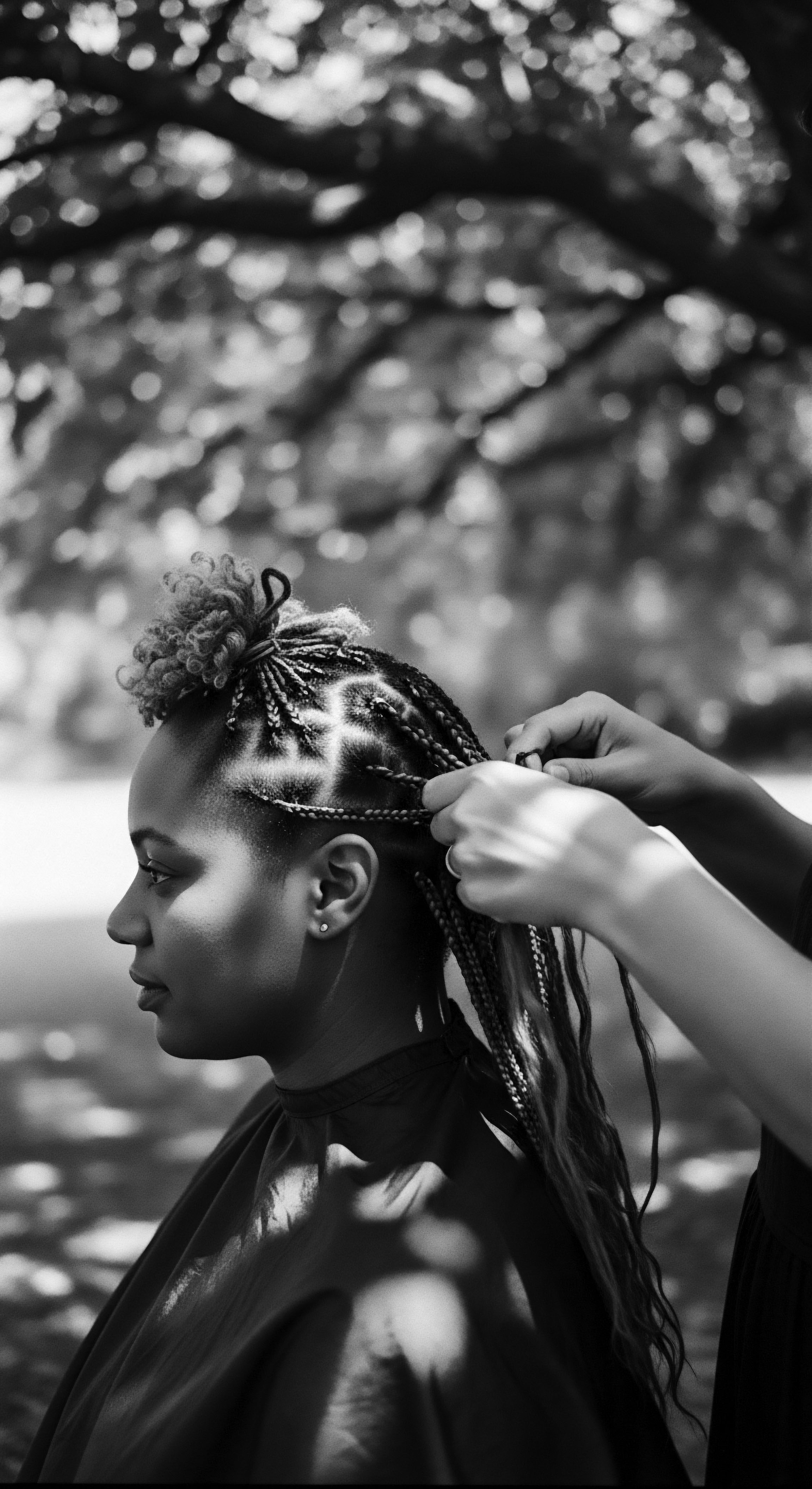
The Tender Thread ❉ Care and Community
The Fulani Braids, like many traditional African hairstyles, serve a practical purpose as a protective style. For textured hair, which is often more prone to dryness and breakage due to its unique curl pattern and lower sebum distribution along the strand, protective styles like braids minimize manipulation, retain moisture, and promote length retention. This understanding of hair care is deeply embedded in ancestral wisdom, where natural materials like oils, herbs, and clays were used to nourish and maintain hair health. The practices associated with Fulani Braids exemplify a long-standing knowledge of textured hair’s specific needs, passed down through generations.
The community aspect of hair care within African cultures is particularly poignant. Braiding sessions provided a space for women to connect, share knowledge, and offer mutual support. This communal tradition persists today, with many Black women recalling hours spent in the laps of mothers or in the company of friends, engaging in the intimate act of hair braiding. Such experiences foster a profound sense of connection to one’s heritage and community, making the process of styling hair as significant as the resulting appearance.
| Adornment Cowrie Shells |
| Traditional Meaning Wealth, prosperity, fertility, protection |
| Cultural Significance Historically used as currency, symbolizing affluence and good fortune. |
| Adornment Silver Coins |
| Traditional Meaning Familial heritage, wealth, status |
| Cultural Significance Often passed down through generations, signifying lineage and prosperity. |
| Adornment Amber Beads |
| Traditional Meaning Beauty, spiritual connection, status |
| Cultural Significance Used for aesthetic enhancement and believed to hold spiritual properties. |
| Adornment Metal Accents |
| Traditional Meaning Status, tribal identity, protection |
| Cultural Significance Incorporated for visual appeal and as markers of social standing. |
| Adornment These adornments transformed Fulani Braids into a visual narrative of a person's life and communal standing. |
The significance of hair in pre-colonial African societies extended beyond aesthetics; it was a fundamental aspect of social and spiritual life. Hair was seen as the most elevated part of the body, a spiritual antenna, and its styling was often intertwined with rituals and ceremonies. For example, in some cultures, specific hairstyles were worn during initiation ceremonies, marking a young woman’s transition to adulthood. The Fulani Braids, therefore, are not merely a hairstyle; they are a profound cultural expression, a testament to the intricate relationship between hair, identity, and communal life that has persisted through generations.

Academic
From an academic perspective, the Fulani Braids represent a complex sociocultural phenomenon, an artifact of material culture that provides profound insights into the construction of identity, the dynamics of cultural transmission, and the enduring impact of historical forces on Black and mixed-race hair experiences. The term ‘Fulani Braids’ thus signifies more than a stylistic choice; it becomes a conceptual framework for understanding the intricate interplay of elemental biology, ancestral knowledge systems, and socio-political landscapes that shape textured hair heritage globally. This academic elucidation necessitates a rigorous examination of its historical roots, its symbolic connotations, and its contemporary re-interpretations, all viewed through a lens that acknowledges the inherent value and resilience of African hair traditions.
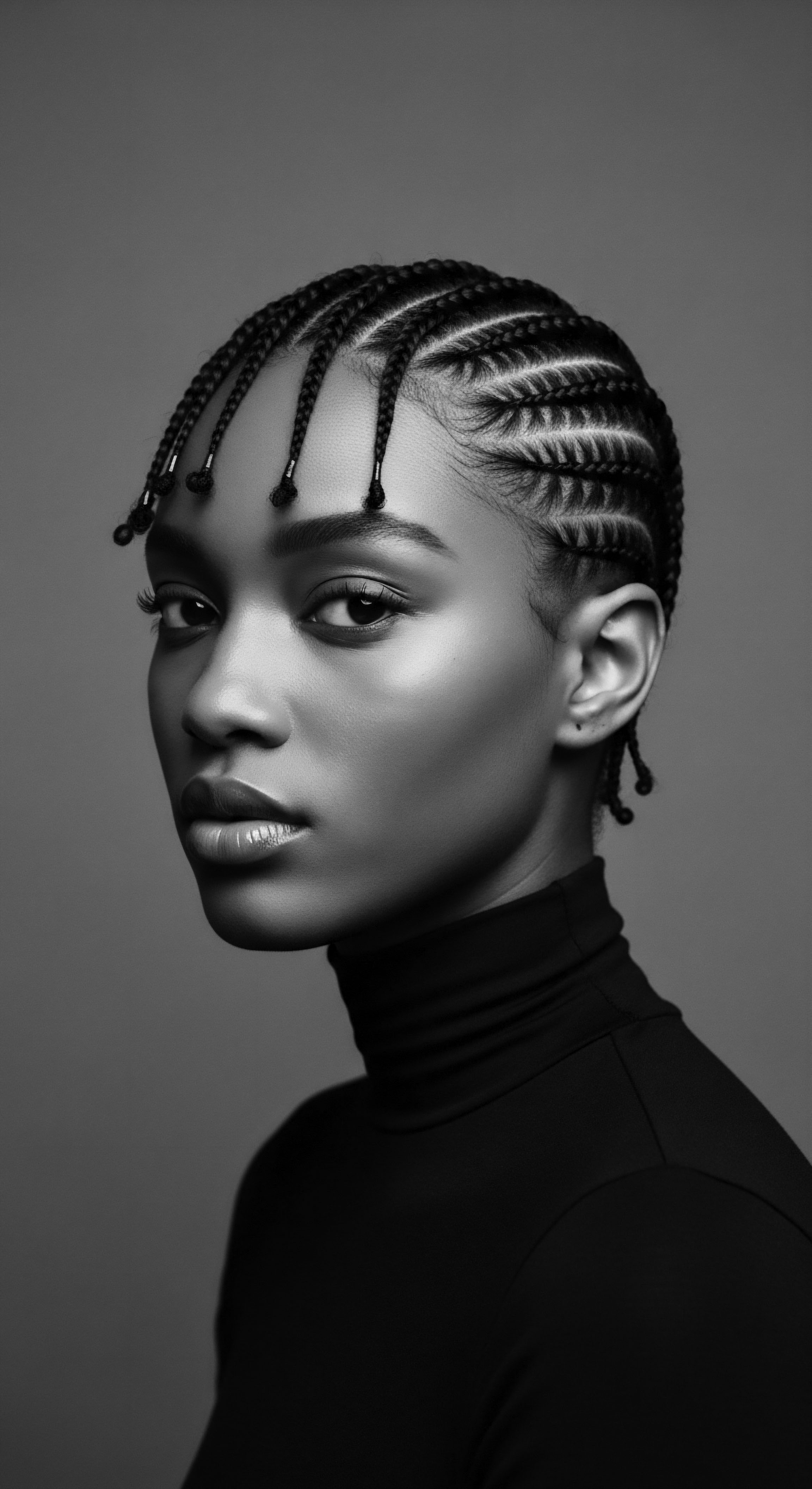
The Deep Structure ❉ Semiotics and Cultural Transmission
The academic examination of Fulani Braids delves into their semiotic function, recognizing them as a sophisticated visual language. In pre-colonial African societies, hairstyles were potent markers of social identity, communicating intricate details about an individual’s life. As noted by Lori Tharps, a professor of journalism and co-author of Hair Story ❉ Untangling the Roots of Black Hair in America, “Your family, your tribe all had their own specific hairstyle”. This deep-seated practice transformed hair into a dynamic canvas for social commentary and historical record.
The specific patterns, the direction of the braids, and the chosen adornments conveyed messages regarding age, marital status, religious affiliation, wealth, and social rank. For instance, a married Fulani woman’s braids might incorporate specific accessories and beads that clearly signify her status. This sophisticated system of visual communication demonstrates a highly developed cultural grammar of hair, where each element contributes to a collective understanding of identity.
The cultural transmission of Fulani braiding techniques across generations speaks to a resilient and adaptable knowledge system. This transmission was often oral and practical, passed down through intimate, communal sessions where elders instructed younger generations. This intergenerational pedagogy ensured the preservation of not only the physical technique but also the deeper cultural meanings and values associated with the styles.
Even in the face of colonial pressures that sought to devalue and suppress African hair practices, these traditions persisted, often as acts of subtle resistance and identity assertion. The continuation of these styles in the diaspora, even among individuals who have never physically been to Africa, serves as a powerful testament to the enduring nature of cultural memory and ancestral connection (Nyela, 2021).
Fulani Braids are a living text, encoding centuries of cultural wisdom and resilience within their intricate patterns.
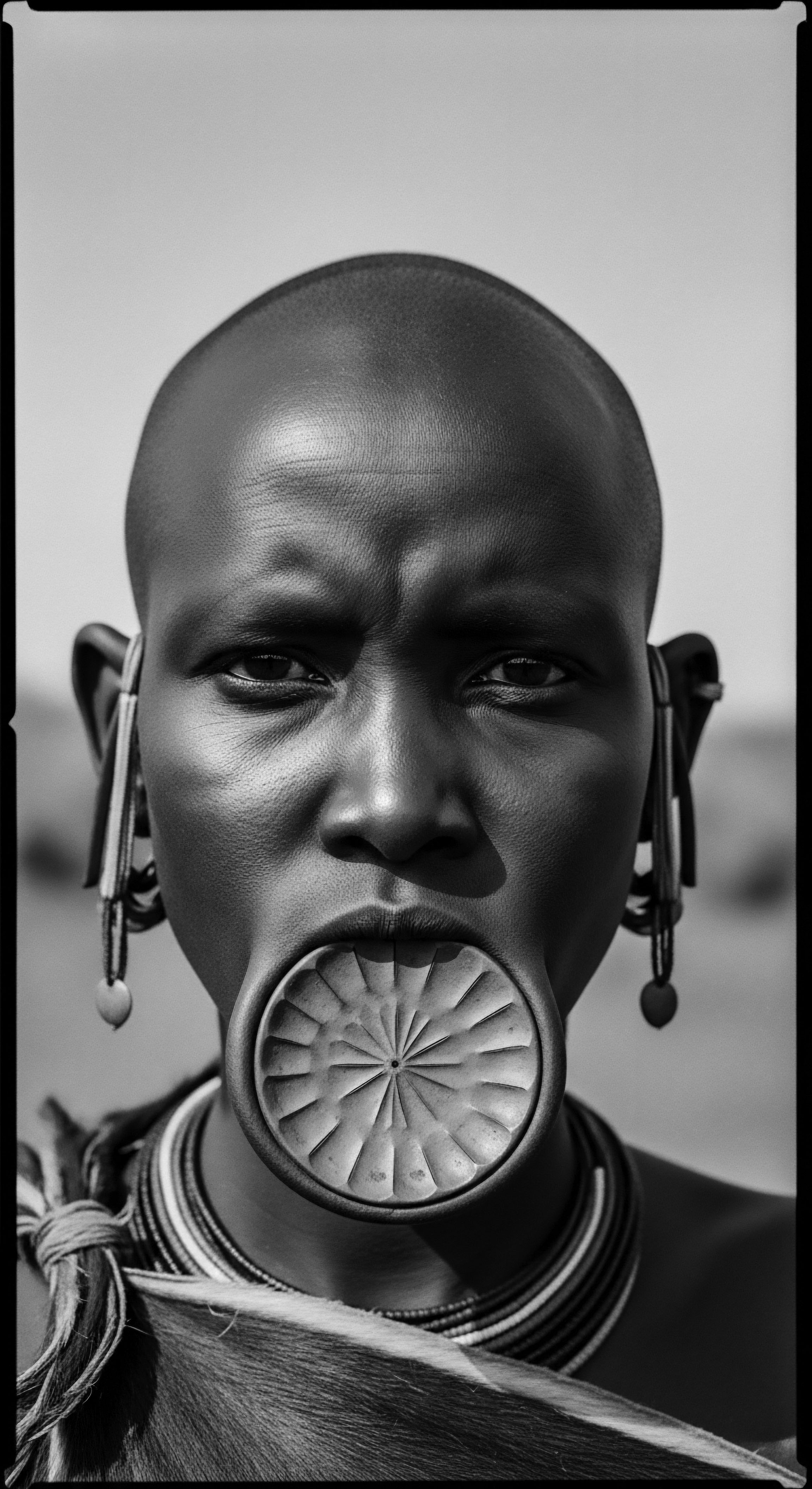
Coloniality and Resistance ❉ Hair as a Site of Struggle
The academic lens further reveals how Fulani Braids, and Black hair generally, became a contested site during periods of colonialism and enslavement. European colonizers often imposed their own beauty standards, deeming natural African hair as “unprofessional,” “dirty,” or even “animal-like”. This systematic denigration of Black hair was a deliberate strategy to strip Africans of their identity and cultural heritage. Enslaved Africans were often forced to shave their heads upon capture, a brutal act designed to sever ties to their communities and erase their self-worth.
Despite these oppressive forces, African hair traditions, including the spirit of styles like Fulani Braids, became instruments of resistance. During the transatlantic slave trade, enslaved people ingeniously used cornrow patterns to map escape routes, braiding seeds and small bits of gold into their hair for sustenance during their perilous journeys. This profound historical example illustrates how hair, far from being a superficial concern, served as a tool for survival, communication, and the preservation of agency. This act of braiding, a seemingly simple gesture, became a powerful, silent declaration against dehumanization.
In contemporary contexts, the legacy of hair discrimination persists. Studies indicate that Black women continue to face pressure to alter their natural hair to conform to Eurocentric beauty standards in professional and social settings. A 2020 University of Michigan study found that approximately 80% of Black women report changing their hair from its natural state because they consider it essential for social and economic advancement. This statistic underscores the ongoing systemic biases that disproportionately affect Black individuals and their textured hair.
However, movements like the CROWN Act in the United States, which bans discrimination based on hair texture and protective styles, represent significant progress in reclaiming and celebrating Black hair heritage. The continued wearing and celebration of Fulani Braids in the modern era thus serves as an ongoing act of cultural reclamation and a powerful statement of self-acceptance and pride.
The intersection of hair, identity, and social justice is a critical area of academic inquiry. Scholars like Emma Dabiri, in her work Twisted ❉ The Tangled History of Black Hair Culture, dissect the racist underpinnings of hair categorization and the ways hair has been used to racialise individuals. Her research highlights how traditional African hair practices, including intricate braiding patterns, encode millennia-old histories, even fractal mathematics, and served as detailed social commentary and, as previously mentioned, secret maps to freedom. This level of complex meaning embedded within a hairstyle elevates Fulani Braids beyond a mere aesthetic choice to a significant subject of anthropological, sociological, and historical study.

Bio-Cultural Interface ❉ Hair Science and Ancestral Care
The scientific understanding of textured hair, particularly its unique geometric and mechanical properties, provides a compelling validation of long-standing ancestral care practices associated with styles like Fulani Braids. African hair, characterized by its helical curl pattern, tends to be more fragile and prone to dryness compared to other hair types. This inherent fragility means it requires specific care to prevent breakage and promote length retention. Ancestral practices, developed through generations of empirical observation, often involved minimal manipulation, protective styling, and the use of natural emollients and herbs.
- Moisture Retention ❉ Traditional oils and butters, such as shea butter and various plant-based infusions, were used to seal moisture into the hair strands, compensating for the natural tendency of textured hair to dry out quickly. These practices align with modern dermatological recommendations for moisturizing curly and coily hair.
- Low Manipulation ❉ Braiding, twisting, and other protective styles like Fulani Braids minimize daily handling, reducing friction and stress on the hair shaft. This practice directly addresses the vulnerability of textured hair to mechanical damage, allowing it to grow and retain length.
- Scalp Health ❉ Traditional hair care rituals often emphasized scalp massage and the application of natural ingredients to maintain a healthy scalp environment, recognizing its role as the foundation for healthy hair growth. This foresight in ancestral care resonates with contemporary trichological principles.
- Environmental Protection ❉ Protective styles shield the hair from environmental aggressors such as sun, wind, and dust, which can cause dryness and damage. The structured nature of Fulani Braids provides a physical barrier, preserving the integrity of the hair.
The concept of hair as a “crown” in African cultures is not merely metaphorical; it reflects a deep understanding of hair’s biological and spiritual significance. The careful, time-intensive process of creating Fulani Braids speaks to a holistic approach to wellness, where external appearance is intertwined with internal well-being and a connection to one’s lineage. The ongoing popularity of Fulani Braids and other protective styles among Black women globally demonstrates a continued recognition of their practical benefits for hair health, alongside their powerful cultural resonance. This intersection of scientific understanding and ancestral wisdom underscores the profound value of Fulani Braids as a practice that nourishes both the physical strand and the spirit it carries.
Furthermore, the communal aspect of braiding, where skilled hands meticulously craft these styles, speaks to an embodied knowledge that cannot be replicated by automated processes. This human touch, imbued with generations of wisdom, adds an immeasurable value to the Fulani Braids. It is a process that builds not just a hairstyle, but also a sense of connection, shared identity, and continuity with a rich ancestral past. The ongoing practice of these styles is a vibrant, living affirmation of Black and mixed-race hair experiences, defying historical attempts at erasure and celebrating the inherent beauty and strength of textured hair.
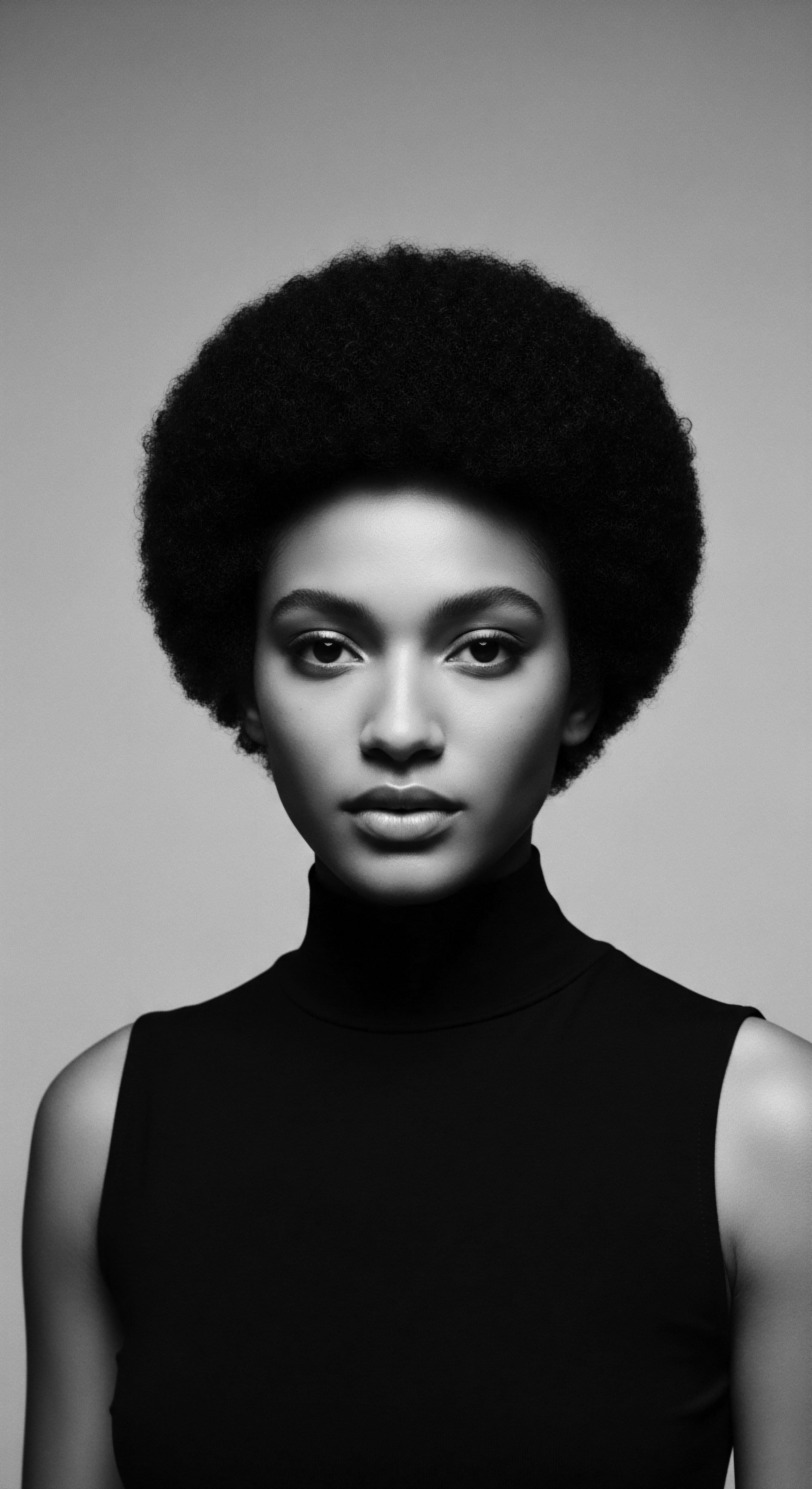
Reflection on the Heritage of Fulani Braids
The journey through the intricate world of Fulani Braids reveals more than a mere style; it uncovers a profound meditation on textured hair, its heritage, and its care. These braids stand as a living, breathing archive within Roothea’s ‘living library,’ echoing stories from ancient hearths and resonating through contemporary expressions of identity. The deep cultural roots of Fulani Braids, stretching back millennia into West African societies, remind us that hair has always been a powerful canvas for meaning, a conduit for communication that transcended spoken words. It was a visual lexicon, declaring status, lineage, and life’s passages, meticulously crafted and adorned with symbols of prosperity and spiritual connection.
The tender thread of care, woven through generations, speaks to an ancestral wisdom that intuitively understood the unique needs of textured hair. Long before modern science articulated the helical structure or moisture retention challenges of coily strands, traditional practices centered on protective styling and natural emollients, safeguarding hair as a sacred part of self. This holistic approach, often performed within communal settings, fostered bonds and passed down not just techniques, but also the very spirit of shared experience and mutual support. The rhythmic engagement of hands, the quiet conversations, and the shared space transformed a practical necessity into a ritual of connection.
As we consider the unbound helix of the future, the Fulani Braids stand as a resilient emblem against historical forces of erasure and discrimination. They are a testament to the enduring strength of Black and mixed-race hair experiences, a vibrant declaration of pride that continues to shape narratives of identity and self-acceptance. Each braid, each cowrie shell, each bead, whispers tales of survival, creativity, and an unbroken lineage of beauty. This enduring practice invites us to honor the past, celebrate the present, and envision a future where every strand of textured hair is recognized for its inherent majesty and its profound connection to a rich, living heritage.
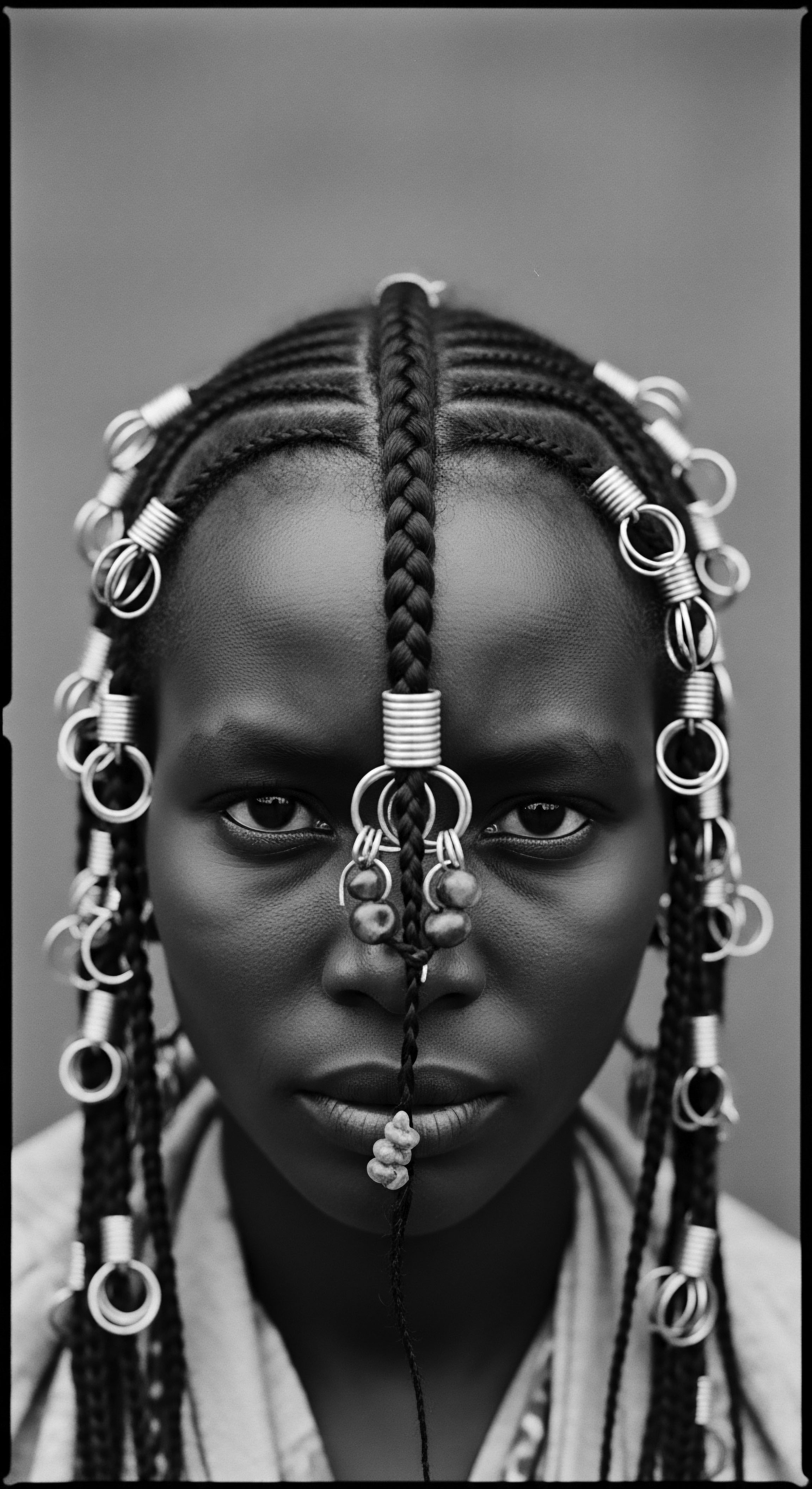
References
- Byrd, A. & Tharps, L. (2001). Hair Story ❉ Untangling the Roots of Black Hair in America. St. Martin’s Press.
- Dabiri, E. (2020). Twisted ❉ The Tangled History of Black Hair Culture. HarperCollins.
- Daff, M. N’Diaye-Correard, G. & Equipe du projet IFA. (2006). Les mots du patrimoine ❉ le Sénégal. Éditions de archives contemporaines.
- Jacobs-Huey, L. (2006). From the Kitchen to the Parlor ❉ Language and Becoming in African American Women’s Hair Care. Oxford Academic.
- Mercer, K. (1997). Black Hair/Style Politics. New Formations, (3), 33-54.
- Molamodi, M. J. et al. (2021). Hair care practices and their impact on hair and scalp health in Black women. Journal of the American Academy of Dermatology.
- Nyela, O. (2021). Braided Archives ❉ Black hair as a site of diasporic transindividuation (Master’s thesis). York University.
- Pergament, D. (1999). It’s Not Just Hair ❉ Historical and Cultural Considerations for an Emerging Technology. Chicago-Kent Law Review, 75(1), 41.
- Tarlo, E. (2017). Entanglement ❉ The Secret Lives of Hair. Oneworld Publications.
- Tharps, L. L. & Byrd, A. (2014). Hair Story ❉ Untangling the Roots of Black Hair in America. St. Martin’s Press.
